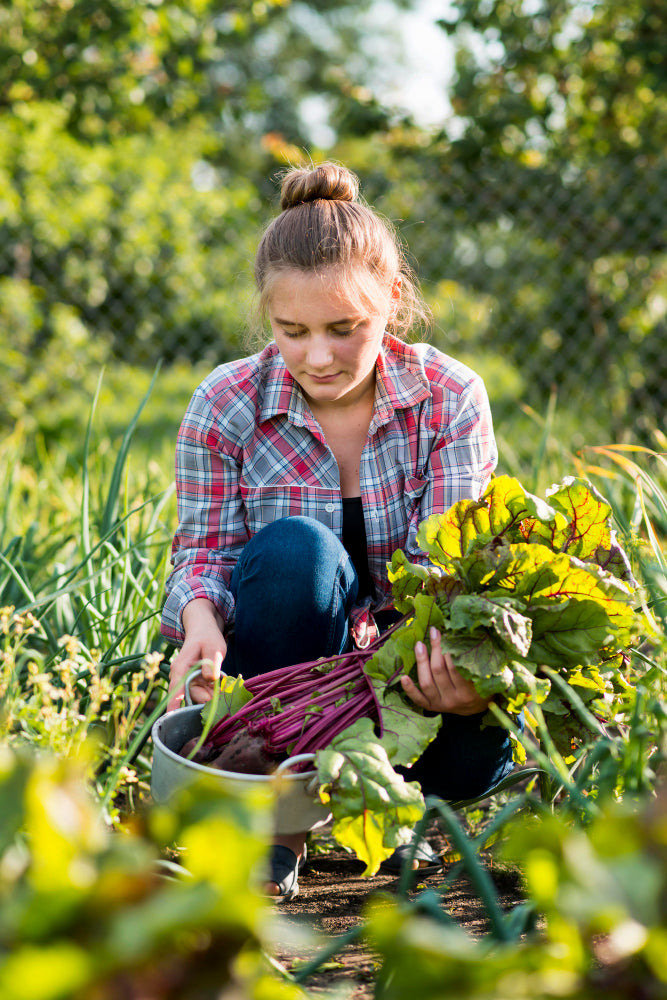Among the many benefits of growing your own vegetables in your garden, one of the most tangible is cost savings - imagine that one tomato plant can produce up to 13 kg of fruit per season. Vegetables for the garden that you sow yourself bring not only significant savings, but also the comfort of avoiding crowds in stores and the health benefits of eating fresh products, full of vitamins and minerals. In turn, caring for the environment and taking steps towards self-sufficiency gain a completely new dimension when you decide to grow vegetables in the garden.
We have prepared a comprehensive guide that will allow you to understand what to plant on your plot and how to care for these vegetables , so that growing them in the garden becomes not only your passion, but also a source of health.
How to prepare a plot for growing vegetables

When choosing a place for your garden vegetables , make sure it has plenty of sunlight - garden vegetables need at least six hours of direct sunlight a day. A flat and even place, adapted to the specific lighting needs of your plants, will be ideal. In colder climates, consider using raised beds, which allow the soil to warm more quickly in spring and increase yields.
Prepare your plot for planting by following these steps:
- Remove existing grass, weeds and debris from the area; identify and remove plants that may be harmful.
- Mark your plot with string and stakes to prepare it for planting.
- Dig the plot to a depth of 30 to 45 cm to remove stones and roots.
- Add organic matter to the soil to improve its fertility, choosing the appropriate type depending on the soil pH.
- Spread the soil to break up any large clumps and remove any rocks or roots.
- If necessary, place barriers around beds to protect tall vegetables or plants from wind.
To effectively manage perennial weeds, practice regular weeding or tilling, or use a mulch that can help control them. Also, remember to maintain a narrow cultivation strip around your garden to prevent surrounding grasses from encroaching
When planning your late winter vegetable garden , consider plant placement and avoid crowding them to prevent competition for nutrients, moisture and airflow. Follow the recommended plant spacing on seed packets to ensure they have the best growing conditions.
Remember that most garden vegetables grow best when they receive about one inch of rainfall per week throughout the growing season. In a dry year, access to irrigation may be necessary; Many home gardeners use sprinkler or drip irrigation.
TOP 20 vegetables to grow on the plot
By starting with cold-tolerant vegetables , you can start planting in the spring or fall. Such vegetables include:
- Coriander – ideal for planting in early spring or late autumn, it adds flavor to many dishes.
- Radishes – grow quickly and are an excellent choice for beginner gardeners.
- Lettuce - the most popular leafy vegetable, thrives in colder climates.
- Spinach - a source of many vitamins, grows well in cool climates.
- Beetroots – not only the root but also the leaves are edible, which makes them extremely versatile.
- Broccoli – rich in vitamins and can be harvested for a long time.
- Cabbage – durable and efficient, great for storage
When warmer weather comes, it is worth choosing vegetables that prefer more sun:
- Tomatoes – require support in the form of trellises or cages, but are extremely productive.
- Pumpkins – they take up more space, but are relatively easy to grow.
- Cucumbers – ideal for vertical cultivation, which saves space in the garden.
- Eggplants – prefer warm and sunny locations.
- Southern peas – resistant to high temperatures and drought, ideal for growing in warmer regions.
- Zucchini - a very fruitful and aromatic vegetable.
In addition, some vegetables are known for their nutritional value and should be included in every vegetable garden :
- Potatoes - the basic source of carbohydrates, can be stored for a long time.
- Onion – essential in the kitchen, requires little care.
- Garlic – easy to grow and has many medicinal and culinary uses.
- Carrots – sweet and crunchy, can grow in colder climates.
- Parsley - aromatic and full of vitamins, is one of the most popular vegetables in vegetable gardens.
For those who are thinking about growing vegetables for self-sufficiency and safety, vegetables for the so-called survival garden:
- Beans – both legumes and green beans, are a source of protein.
- Corn – can be stored for a long time and used in many ways.
Remember that when choosing vegetables for your garden, you should adapt them to the conditions on your plot and your preferences. Some vegetables , such as tomatoes or cucumbers, may require additional support in the form of trellis or cages, which will allow for better use of space and increase the efficiency of growing vegetables in the garden. Growing vegetables is not only beneficial to your health, but also allows you to enjoy fresh, tasty crops straight from your own garden.
Vegetable care during the season

For your garden vegetables to grow healthily and abundantly, regular care is key. Here are some tips on how to care for vegetables in your garden:
- Watering: Vegetables need constant irrigation, about one inch of water per week, to support healthy growth and high yields. This is especially important during the summer months when plants are more active. Some plants, such as peas, beans, sweet corn, potatoes and large leafy plants, require additional irrigation at certain stages of growth. Container gardens require more frequent watering, especially during high heat or wind, because the soil dries more quickly.
- Fertilization: Regularly adding fertilizers ensures that plants have access to enough nutrients, which translates into better growth and stronger immunity. Some crops, such as tomatoes, can benefit from calcium-enriched fertilizers to prevent flower rot.
- Pest and disease protection: Check your plants regularly for signs of pests or disease. For minor infestations, use natural pest control methods such as insecticidal soap or neem oil. Some diseases can only be prevented by rotating crops and carefully disinfecting tools.
Below you will find some practical tips for caring for vegetables:
- Watering in the morning: Watering your plants in the morning helps keep them hydrated for longer and protects their roots from summer temperatures. This also reduces the risk of fungal diseases.
- Plant support: Plants that tend to grow vigorously or shade out neighboring crops should be supported with cages, stakes or other supports. This ensures optimal sunlight and prevents damage caused by tipping over.
- Watch and respond : Inspect your plants regularly for signs of pests or disease. If you notice any problems, remove infected leaves or apply insecticidal soap to the entire plant.
Remember that patience and commitment are key aspects of successfully growing vegetables . Enjoy the process of watching your "green babies" grow and become strong, mature plants that will soon provide bountiful harvests for your favorite meals straight from the garden.
A garden source of happiness and vitamins
Careful considerations about the selection and care of vegetables in our gardens lead us to the conclusion that both experience in gardening and the satisfaction of harvesting crops grown by oneself are within the reach of every gardener. By taking care of appropriate solar conditions, soil structure and careful irrigation and fertilization, we increase the chance of lush and healthy vegetables , ready to eat directly from the bed.
The process of growing vegetables on the plot also has a deeper dimension - it introduces harmony between nature and our everyday life and allows us to build well-thought-out self-sufficiency. This experience is worth taking up the challenge, it offers not only healthy products, but also the joy of working in nature, while providing valuable lessons in patience and care for the environment around us.

